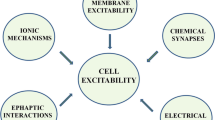Abstract
Formyl peptides activate superoxide anion (O2 −) formation in human neutrophils and in HL-60 cells via pertussis toxin (PTX)-sensitive guanine nucleotide-binding proteins (G-proteins), and histamine (HA) mediates inhibition of O2 − formation via H2-receptors. We have studied the effects of lipophilic arpromidine-derived guanidines, which are potent, full H2-receptor agonists in the guinea pig atrium, on O2 − formation and on activation of G-proteins in HL-60 membranes and on purified G-proteins. We have also studied the effects of a HA trifluoromethyl-toluidide derivative (HTMT), a cationic-amphiphilic HA derivative which activates O2 − formation in HL-60 cells through a mechanism which is independent of known HA receptor subtypes, on G-protein activation. Guanidines, at concentrations, up to 30 μmol/l inhibited and, at concentrations above 30 μmol/l, enhanced formyl peptide-induce O2 − formation in neutrophils. In HL-60 cells, guanidines per se activated O2 − formation. The stimulatory effects of guanidines on O2 − formation were not inhibited by H1- or H2-receptor antagonists. In HL-60 membranes, guanidines and HTMT, activated high-affinity GTPase in a PTX-sensitive manner. These substances also increased GTP hydrolysis effected by transducin and Gi/Go-proteins. Our data suggest that lipophilic guanidines and HTMT may act as receptor-independent activators of PTX-sensitive G-proteins, resulting in stimulation of O −2 formation.
Similar content being viewed by others
References
Burde R, Buschauer A, Seifert R (1990) Characterization of histamine H2-receptors in human neutrophils with a series of guanidine analogues of arpromidine. Are cell type-specific H2-receptors involved in the regulation of NADPH oxidase? Naunyn Schmiedebergs Arch Pharmacol 341:455–461
Buschauer A (1989) Synthesis and in vitro pharmacology of arpromidine and related phenyl(pyridylalkyl)guanidines, a potential new class of positive inotropic drugs. J Med Chem 32:1963–1970
Hagelën A, Grünbaum L, Nürnberg B, Harhammer R, Schunack W, Seifert R (1994) Lipophilic β-adrenoceptor antagonists and local anesthetics are effective direct activators of G-proteins. Biochem Pharmacol 47:1789–1795
Khan MM, Melmon KL, Marr-Leisy D, Verlander MS, Egli M, Lok S, Goodman M (1987) Congener derivatives and conjugates of histamine: Synthesis and tissue receptor selectivity of the derivatives. J Med Chem 30:2115–2120
Kühn H (1982) Light-regulated binding of proteins to photoreceptor membranes and its use for the purification of several rod cell proteins. Methods Enzymol 81:556–564
Mousli M, Bueb J-C, Bronner C, Rouot B, Landry Y (1990) G protein activation: a receptor-independent mode of action for cationic-amphiphilic neuropeptides and venom peptides. Trends Pharmacol Sci 11:358–362
Murphy PM, Özqelik T, Kenney RT, Tiffany HL, McDermott D, Francke U (1992) A structural homologue of the N-formyl peptide receptor. Characterization and chromosome mapping of a peptide chemoattractant receptor family. J Biol Chem 267:7637–7643
Nürnberg B, Spicher K, Harhammer R, Bosserhoff A, Frank R, Hilz H, Schultz G (1994) Purification of a novel G-protein αo-subtype from mammalian brain. Biochem J 300:387–394
Qui R, Melmon KL, Khan MM (1990) Effects of a histaminetrifluoromethyl-toluidide derivative (HTMT) on intracellular calcium in human lymphocytes. J Pharmacol Exp Ther 253:1245–1252
Qui R, Melmon KL, Khan MM (1993) A histamine derivative increases intracellular calcium mobilization and oxidative metabolism in HL-60 cells. Immunopharmacology 26:213–224
Qui R, Melmon KL, Khan MM (1994) Effects of lymphokines and mitogens on a histamine derivative-induced intracellular calcium mobilization and inositol phosphate production. Biochem Pharmacol 47:2097–2103
Seifert R, Schultz G (1987) Reversible activation of NADPH oxidase in membranes of HL-60 leukemic cells. Biochem Biophys Res Commun 146:1296–1302
Seifert R, Schultz G (1991) The superoxide-forming NADPH oxidase of phagocytes: An enzyme system regulated by multiple mechanisms. Rev Physiol Biochem Pharmacol 117:1–338
Seifert R, Hagelüken A, Höer A, Höer D, Grünbaum L, Offermanns S, Schwaner I, Zingel V, Schunack W, Schultz G (1994) The H1 receptor agonist 2-(3-chlorophenyl)histamine activates G1 proteins in HL-60 cells through a mechanism that is independent of known histamine receptor subtypes. Mol Pharmacol 45:579–586
Author information
Authors and Affiliations
Rights and permissions
About this article
Cite this article
Hagelüken, A., Burde, R., Nürnberg, B. et al. Cationic-amphiphilic arpromidine-derived guanidines and a histamine trifluoromethyl-toluidide derivative may activate pertussis toxin-sensitive G-proteins by a receptor-independent mechanism. Naunyn-Schmiedeberg's Arch Pharmacol 351, 305–308 (1995). https://doi.org/10.1007/BF00233251
Received:
Accepted:
Issue Date:
DOI: https://doi.org/10.1007/BF00233251




